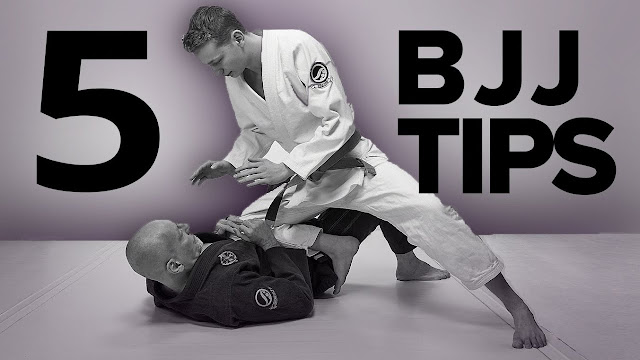 |
| (Image Source: Google Image) |
LEARNING BRAZILIAN JIU JITSU ISN'T AN EASY TASK, AND IT NEVER ENDS. WHITE BELTS, ON THE OTHER HAND, HAVE THE TOUGHEST PHASE OF THE LEARNING CURVE BECAUSE EVERY POSITION AND EVERY TECHNIQUE IS FOREIGN, CHALLENGING, AND OFTEN CONFUSING.
This article is meant to give white belts and beginners a few tips on how to learn Jiu-Jitsu faster and hopefully stick through the most challenging part of the journey.
I believe that most of you will continue training Jiu-Jitsu for the rest of your life if you can get beyond White Belt and into the Blue or Purple Belt. The hardest part of training is getting through the White belt phase.
SO HERE ARE FIVE TIPS TO IMPROVE FASTER IN BRAZILIAN JIU-JITSU
1. TRAIN CONSISTENTLY
Consistent training is critical, and taking breaks from training is not a good idea. Don't get me wrong; I'm not advocating 7 days a week training. Whether you train two, three, four, or more days weekly, make it your goal to train consistently.
A minimum of two is required. Don't let anything stop you from going to class every week. Initially, you will feel sore and tired, and fatigued some days when you start Jiu-Jitsu. At least once a week, you will likely experience uncomfortable and unfamiliar soreness. However, you must tell yourself this is normal and push through it.
2. ASK ONE REAL QUESTION EVERY CLASS (DON'T BE AFRAID TO SPEAK UP)
Take every class to add at least one new skill to your Jiu Jitsu arsenal. If you go to class and do the movements without thinking or focusing, you might learn a little, but it won't be as efficient and effective as it could be. The first step to becoming an excellent Brazilian Jiu-Jitsu practitioner is understanding the art.
3. COMPETE OFTEN AND EARLY ON
Many white belts want to compete, but they want to wait until they are blue belts. The idea of waiting to compete is something I'm afraid I have to disagree with. At a white belt, there is no pressure, and everything is about learning, so you should try to gain as much experience as possible. There is no pressure to win anything a white belt (of course, every belt is about learning).
What would you prefer, be a Blue Belt who has competed 15 or 20 times at White Belt or a Blue Belt who is entering their first competition because they wanted to wait until they were ready? Take advantage of the white belt experience to improve your technical skills in leaps and bounds.
4. STUDY OUTSIDE OF CLASS
Some Jiu-Jitsu coaches discourage their students from watching Jiu-Jitsu videos or studying "YouTube" techniques outside of class, but I strongly disagree with that idea. As I've learned, a lot of crap and poor techniques are floating around online.
You can also find tons of gold and valuable resources that will allow you to learn Jiu-Jitsu 10X faster than you would if you didn't study in your free time.
Get guidance from your Jiu-Jitsu coach about what is suitable material and what should be avoided. Here are a few resources with excellent material for studying up to Black Belt.
5. DO POSITIONAL TRAINING/SPARRING
Every time you learn a new position, whether it's the Spider Guard or the Butterfly Guard... don't forget to roll from that position a few times. To ensure that you retain what you learn and to become sharp from the new positions, spar from the new positions, even if they aren't your "A-Game."
There are a lot of white belts who are afraid to open their guard because they don't want to be passed. When you train in open guards such as spider guards, de la Riva guards, butterfly guards, etc., you will become more comfortable and start to see improvements in your entire game.
I hope you enjoyed the article and found some helpful information for your Jiu-Jitsu journey...
Remember never to give up, no matter what. There will be days and weeks where you feel drained and even burned out, but if you stick with it, Jiu-Jitsu will change your life...
So keep rolling!
Comments
Post a Comment